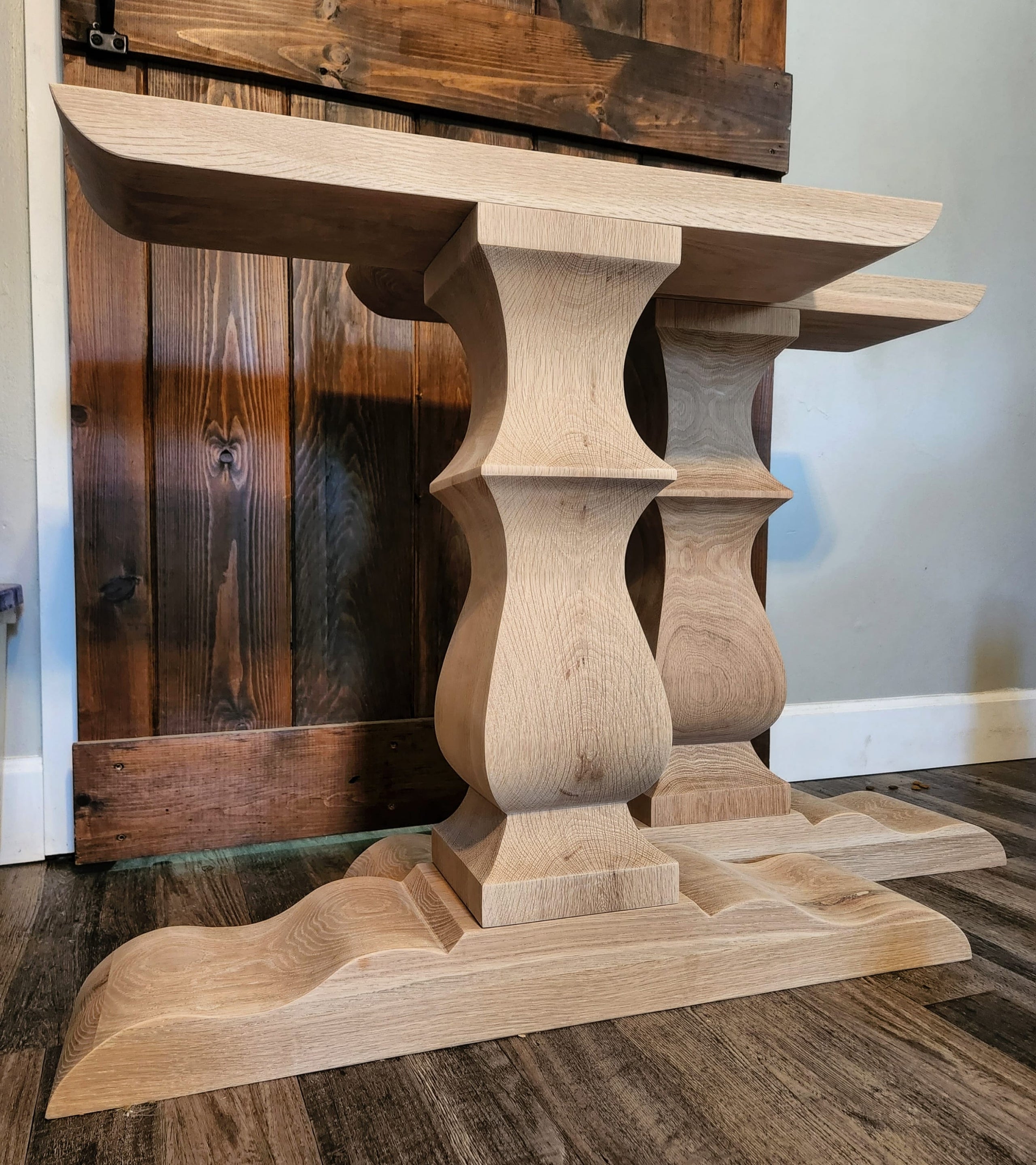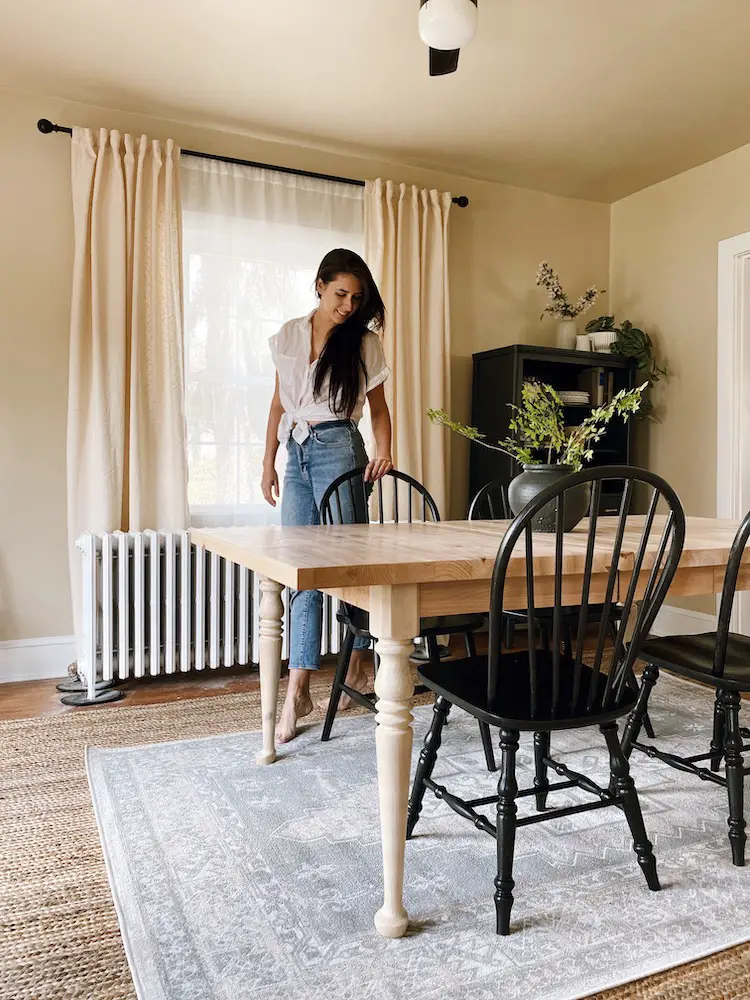Discovering Various Layouts for Dining Room Table Legs to Suit Your Visual
Discovering Various Layouts for Dining Room Table Legs to Suit Your Visual
Blog Article
A Detailed Appearance at Dining Table Leg Styles: Finding the Perfect Suit
Selecting the appropriate dining table leg design is vital for both visual allure and sensible capability. For those with larger tables, trestle legs ensure strong support, whereas barrette legs present a mid-century modern vibe with their minimal design. The x-shaped legs blend modern design with boosted stability.
Conventional 4 Legs
Amongst the various kinds of dining table leg styles, the standard four-leg layout remains a timeless choice for numerous families. This traditional setup uses a harmonious mix of capability and aesthetics, making it a seasonal fave. 4 legs offer balanced support, making sure the table stays secure and efficient in bearing substantial weight. This is especially advantageous for houses that frequently organize big celebrations or utilize their table for numerous functions, such as job or crafting.
From an aesthetic point of view, the conventional four-leg style can be conveniently adjusted to numerous indoor designs. Whether crafted from timber, metal, or a mix of products, these legs can be intricately carved, streamlined and minimalistic, or anything in between. Their convenience enables them to match both rustic and modern settings perfectly.
Furthermore, the uncomplicated structure of the four-leg layout helps with ease of motion and placement within a space. Unlike even more complicated bases, this design decreases blockages, offering adequate legroom for diners. In summary, the standard four-leg eating table leg style marries sustaining elegance with useful capability, making it an astute choice for those looking for both form and feature in their eating furnishings.
Stand Base
Frequently celebrated for its elegant and space-efficient design, the stand base is a distinguished option to the conventional four-leg arrangement in eating table leg styles. Without edge legs, restaurants are paid for higher liberty of movement, making it a suitable selection for round and oval tables that promote more intimate and comprehensive celebrations.
Furthermore, the pedestal base's central support can manage considerable weight, permitting making use of much heavier tabletops, such as marble or thick hardwood. This stamina combined with its aesthetic adaptability makes the stand base a popular choice in both traditional and contemporary interior setups. It can seamlessly integrate with various design themes, from classic elegance to minimal modernity. The main column itself uses a canvas for elaborate designs and artistic expressions, including an element of aesthetic rate of interest below the table. In summary, the stand base combines capability snappy, making it an improved and practical alternative for varied dining atmospheres.
Trestle Legs
Trestle legs supply a durable and classic structure for eating tables, identified by their straight cross-bracing and strong support light beams. Stemming from middle ages times, this style has actually progressed yet kept its important framework, making it a perennial favorite in both traditional and modern setups. The central trestle beam of light, commonly supported by 2 or more upright messages, provides exceptional stability, permitting larger table lengths without the demand for additional legs.
A considerable benefit of trestle leg tables is the sufficient legroom they supply. Unlike tables with 4 corner legs, the lack of blockages at the table's sides supplies unimpeded room for chairs and restaurants, boosting comfort and access. This makes trestle tables perfect for suiting bigger celebrations, whether in a dining-room or a banquet hall.
From rustic farmhouse to smooth contemporary layouts, trestle legs can be tailored to match specific preferences. Their enduring charm and functional benefits make trestle legs a compelling choice for those looking for both design and practicality in their eating table.
Hairpin Legs

The charm of hairpin legs hinges on their simplicity and flexibility - dining room table legs. Available in a series of products, including steel and brass, they can be finished in many shades to complement different indoor designs. Whether coupled with a rustic wooden table top or a contemporary glass surface area, barrette legs effortlessly blend performance with a touch of classic beauty
Sturdiness is an additional notable function of barrette legs. Despite their delicate appearance, these legs are crafted to bear considerable weight, making sure the table continues to be stable and protected. Furthermore, they are reasonably easy to install, visite site making them a popular choice for DIY enthusiasts and specialist furnishings makers alike.
X-Shaped Legs

Created from materials such as steel, wood, or a combination of both, X-shaped legs can be tailored to match different style choices. Steel legs often provide a smooth and commercial feeling, ideal for loft-style apartment or condos and modern-day eating rooms.
Moreover, the design behind X-shaped legs ensures also weight circulation, reducing the danger of tottering and enhancing sturdiness. This makes them specifically fit for bigger table that call for added support. Fundamentally, X-shaped legs blend useful design with other modern-day visual appeals, making them an ageless option for diverse dining environments.
Verdict
An extensive understanding of dining table leg designs exposes the distinct qualities and advantages of each layout. Trestle legs make sure robust support for bigger tables, and hairpin legs introduce a mid-century modern-day visual.
Report this page